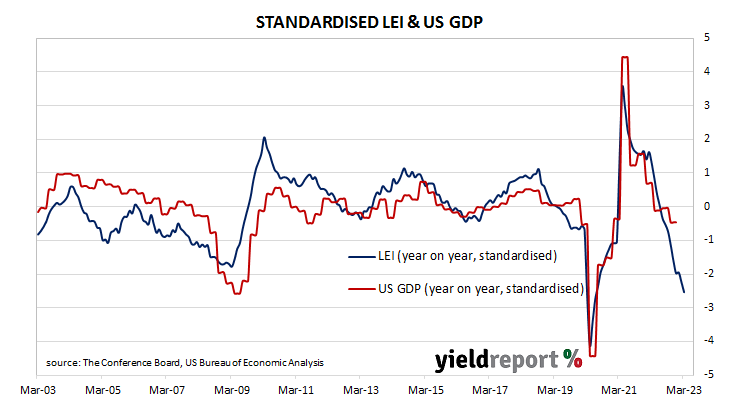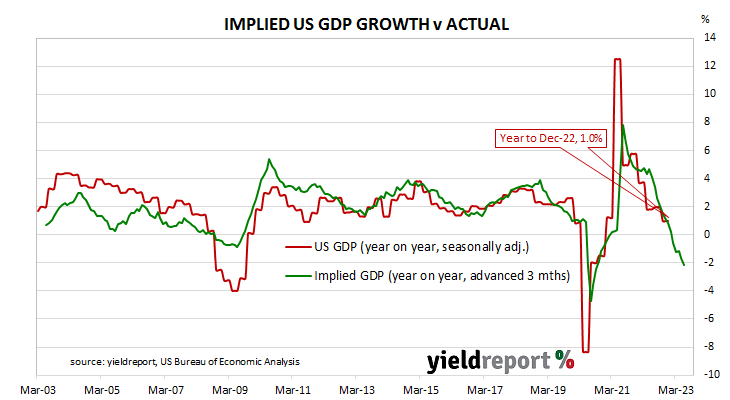Summary: Conference Board leading index down 1.2% in March, fall greater than expected; consistent with worsening economic conditions; CB expects US recession this year; regression analysis implies 2% contraction in year to June.
The Conference Board Leading Economic Index (LEI) is a composite index composed of ten sub-indices which are thought to be sensitive to changes in the US economy. The Conference Board describes it as an index which attempts to signal growth peaks and troughs; turning points in the index have historically occurred prior to changes in aggregate economic activity. Readings from March and April of 2020 signalled “a deep US recession” while subsequent readings indicated the US economy would recover rapidly. More recent readings have implied US GDP growth rates will turn negative.
The latest reading of the LEI indicates it decreased by 1.2% in March. The result was worse than the expected -0.4% as well as February’s revised figure -0.5%.
“The US LEI fell to its lowest level since November of 2020, consistent with worsening economic conditions ahead,” said Justyna Zabinska-La Monica of The Conference Board.
US Treasury bond yields fell noticeably on the day. By the close of business, the 2-year Treasury yield had shed 11bps to 4.15%, the 10-year yield had lost 7bps to 3.53% while the 30-year yield finished 5bps lower at 3.74%.
In terms of US Fed policy, expectations of a higher federal funds rate over the next few months softened while expectations of rate cuts further out firmed. At the close of business, contracts implied the effective federal funds rate would average 4.83% in April, in line with the current spot rate, and then climb to an average of 5.03% in May. June futures contracts implied a 5.08% average effective federal funds rate while April 2024 contracts implied 4.145%, 68bps less than the current rate.
Zabinska-La Monica added she expects “economic weakness will intensify and spread more widely throughout the US economy over the coming months, leading to a recession starting in mid-2023.”
Regression analysis suggests the latest reading implies a -2.1% year-on-year growth rate in June, down from May’s revised figure of -1.6%.



